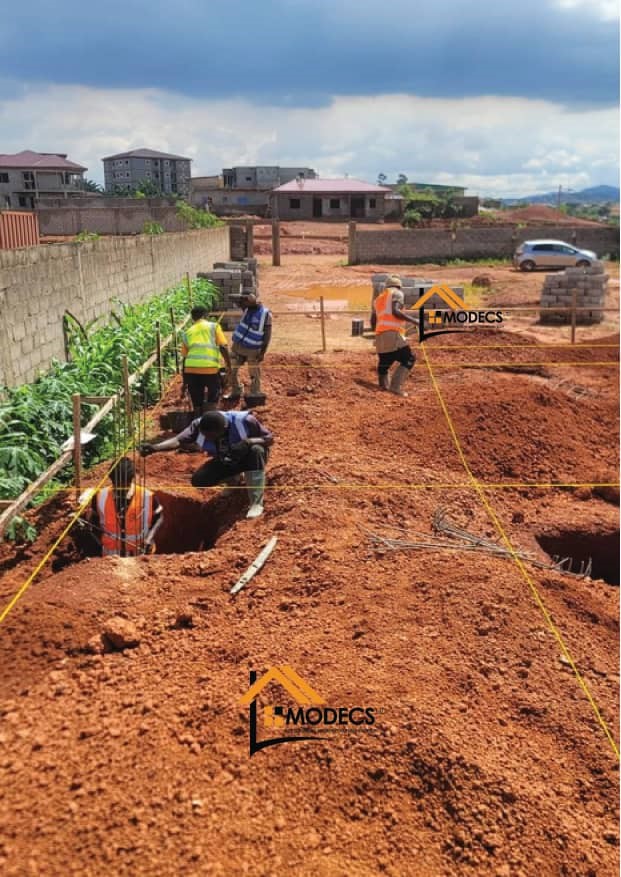In the ocean of construction, we need to understand that foundation plays a vital role in ensuring stability and longevity of the structure. By understanding the different kinds of foundations makes construction work very interesting. By understanding the different types of foundations and following proper construction planning techniques makes you lay a strong ground work for your project. Each and every type of foundation has it strength and suitability. So by the time you consult a professional who will be able to identify the kind of work that will be able to identify the kind of work that will go in for your work that makes your project that needs to be well structured and that is why we have building long lasting structures for ages without any collapse.
In this same light, we need to understand that once a foundation is well done, your structure will be able to go in for years no matter the season and condition, It can stand for tear and wear without any issue. We are equally going to bring to light the different types of foundations and their characteristics. We need to know that they are two types of foundation that is the deep and shallow foundation.
We will start with the shallow foundation. These foundations are placed closer to the ground surface and are suitable for light to medium – weight structures. They include isolated spread footing, wall footings, combined footings, strap footing and raft or mat foundation. This house foundation type is classified as follows
# ISOLATED SPREAD
This kind of foundation is very economical and is used wisely. It is ideal for ordinary building and it’s typically for story buildings. Each column in the structure is isolated to it own footage and transfers load directly to the under-laying soil.
# WALL FOOINGS
These foundations are longer and narrow as compared to the isolated spread footings. They are commonly used to support load bearing walls in buildings with narrow column spacing.
# COMBINED FOOTAGINGS
When two or more columns are closely situated, combined footing are used. These foundations create a continuous support system. They spread the load between the columns and reduce the risk of differential settlement.
# RAFT OR MAT FOOTINGS
These foundations are utilized when the soil has poor bearing capacity or when the super structure load is distributed extensively throughout the entire footprint. Mat foundation are designed to reduce uneven settlement and ensure stability.
Unlike shallow foundation that are placed closer to the surface, deep foundation are used when the depth from the fround surface to the under side of the foundation exceed five times the width of the foundation. They are good for heavy structures or when the soil near the surface isn’t strong enough. We have pile foundation, pier and caisson foundation are the different types of deep foundation.
- PILE FOUNDATION
These foundations are made up of long, slender structural elements called piles. Pikes are driven deep into the ground to transfer the load of the structure to be stronger and more stable.
- PIER FOUNDATIONS
Similar to pile foundation, pier foundations consist of cylindrical or rectangular columns that drilled or driven deep into the ground to bear the load structure.
- CAISSON FOUNDATION
These foundations are used when the load of the structure needs to be transferred to lower layer of the soil. They are constructed by excavating a shaft, placing a reinforcement cage and filling it with concrete to form a watertight structure.
HERE ARE SOME TIPS THAT GUIDE YOU IN BUILDING A GREAT FOUNDATION
1 CONDUCT SITE INVESTIGATION
You must understand the soil profile that is test. It bearing capacity and analysis its suitability for the proposed structure. This information is critical to determine the type of foundation required.
2 OBTAIN AN ENGINEERING GUIDANCE
You must consult an experienced structural engineer to design appropriate foundation base on the specific requirements of your projects. Their expertise will ensure stability and structural integrity.
3 CONSIDER GROUND WATER LEVEL
Determining the depth and consistency of ground water to mitigate the potential problems during construction is an important step in construction. Proper drainage measure should be incorporated to avoid water accumulated near the foundation.
4 ACCOUNT FOR LOAD DISTRIBUTION
You must analysis and calculate the load that the foundation must bear, considering the weight of the structure that is (dead loads) and occupant or variable loads that is live loads. This will guide you design material selection.
5 ENSURE PROPER REINFORCEMENT
You must reinforce the foundation either suitable material to enhance its strength and durability. Especially in areas prone to earth quarks, expansive soil or high-water tables.
Provide strength and durability to your foundations with concrete cement and materials from Modecs LTD and for all your construction works



Share Post
8 Comments